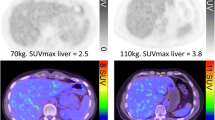Abstract
The introduction of integrated PET/CT has dramatically increased the worldwide rate of growth for PET, predominantly for oncologic imaging with the glucose analog 18F-fluorodeoxyglucose (FDG). A rapidly expanding body of literature demonstrates that the use of FDGPET/CT and the resultant ability to interpret coregistered and fused PET and CT images lead to improved observer confidence and improved diagnostic performance by comparison with PET alone, CT alone, and visually correlated PET and CT. The value of PET/CT is likely to be even greater with new PET radiopharmaceuticals under development, many of which produce PET images with even fewer anatomical landmarks than FDG images. PET/CT is also likely to lead to the resurrection of 18F-fluoride as a principal agent for radionuclide bone imaging. There are a number of controversies related to PET/CT, including minimum training and experience requirements for interpreting physicians and defining new models for technical and professional reimbursement.
Similar content being viewed by others
Author information
Authors and Affiliations
Corresponding author
Rights and permissions
About this article
Cite this article
Siegel, B.A., Dehdashti, F. Oncologic PET/CT: current status and controversies. Eur Radiol Suppl 15 (Suppl 4), d127–d132 (2005). https://doi.org/10.1007/s10406-005-0116-7
Issue Date:
DOI: https://doi.org/10.1007/s10406-005-0116-7




